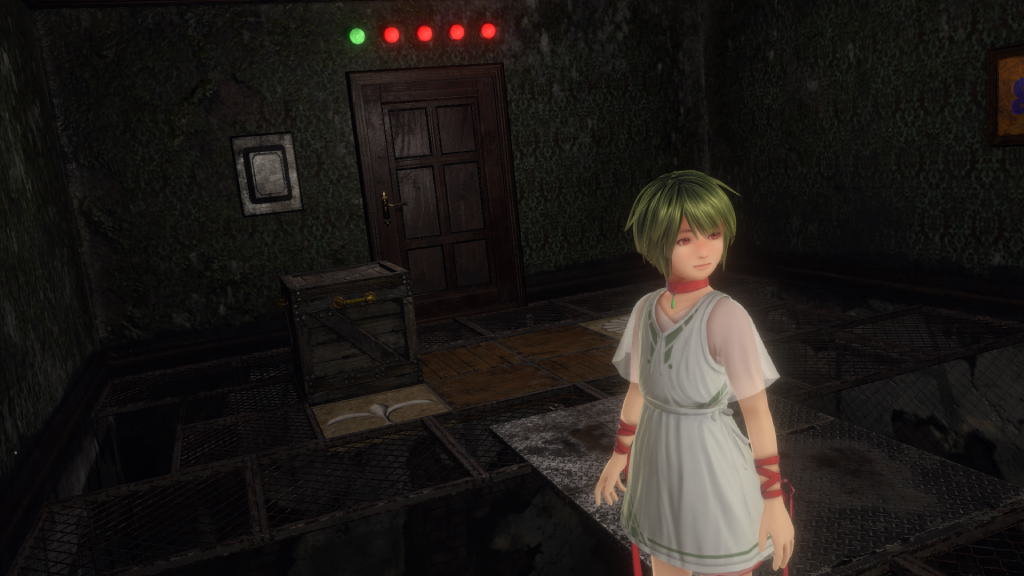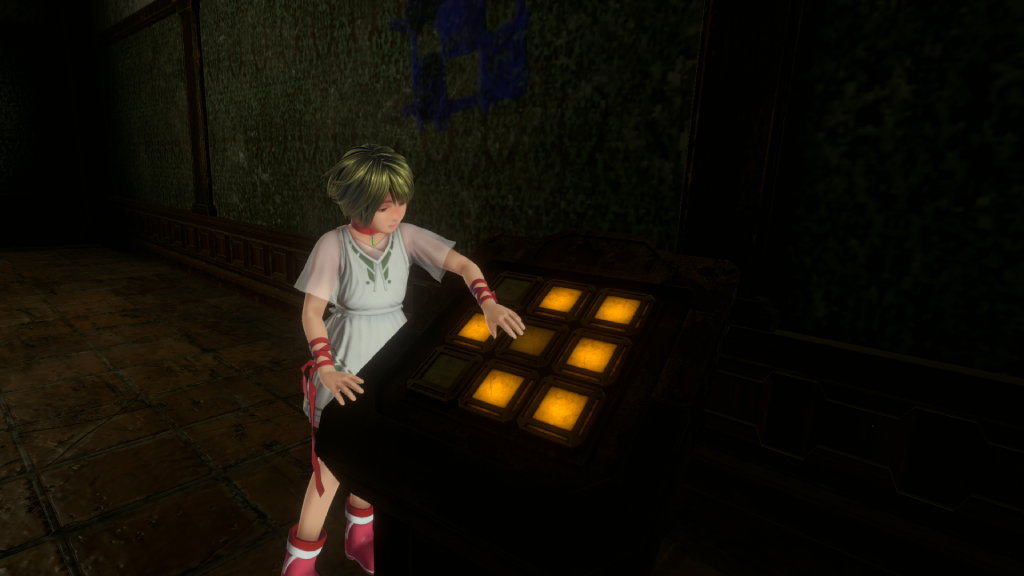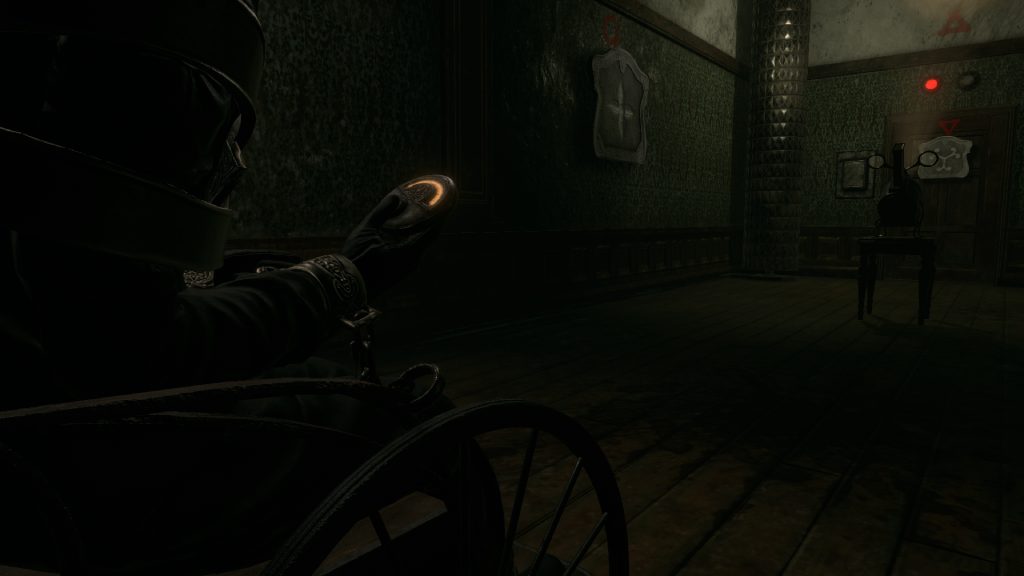The Last Labyrinth team opened a Q&A Livestream Session that was available exclusively for Last Labyrinth’s Kickstarter Backers where the participating team members answered a mix of questions from the 2019 Fan Meeting along with new questions. The participating members of the livestream were Hiromichi Takahashi (Director/Producer), Tetsuya Watanabe(Director/Producer) , Atsuko Fukuyama (Lead Animator), Artist Michiko Kusaba (Lead Environment), and Takuya Hanaoka (Sound Designer). In the overseas broadcast session, Alexis Jassmin Broadhead (Technical Artist) and Tabari Kimia (3D Artist) also took part.
As a preventative measure against the Corona Virus outbreak, each member participated in the livestream from their own homes.
Below is a portion of the Q&A session. The Q&A below does contain spoilers for Last Labyrinth.
■Sound
—–Unlike most of the sound effects in the game, Hanaoka recorded the sound of the wooden rocking horse at his own house, right?
Hanaoka: I didn’t have any sound on hand that would work, but I happened to own a rocking horse around the same size at home. I figured that it would be quicker to just record sounds from that.

Fukuyama: Then you had to re-record it when we put it on a carpet instead of the [wood] floor, right? …Sorry about that.
Kusaba: I’m the one who did that, sorry. (laugh)
Hanaoka: (laugh) Well, wood and carpet are completely different materials, so it couldn’t be helped. When it’s on top of carpet instead of wood, the rocking of the horse will slow down much more quickly, so re-recording became necessary.
Fukuyama: As expected of a pro! I animated the rocking horse, but looking back, I’m not sure there’s much difference between when it was on wood or carpet. I should keep that in mind in the future.
■Death Scenes
—– There are many ways Katia and the player can die in the game, but what were some ideas that were rejected?
Watanabe: There were plenty of ideas for the death scenes, but many were not usable. For example, one idea involved stabbing the player in the face. Why did we reject that one again?
Takahashi: It would’ve been difficult to do well since we lacked control over where the player was looking, and I wanted to avoid showing explicit depictions of physical harm as much as possible. So ideas like getting shot in the face by a hidden arrow were rejected. Another one I rejected was falling into a pool full of some sort of liquid that melts the body down to the bones.
Watanabe: That’s a bit graphic.
Takahashi: Very. (laughs) Also, transparent liquids and items take quite a bit of processing power in VR, so that idea was also rejected on technical grounds. Other than that, early in development, I think there was one suggestion that involved several dogs. Something like getting eaten by a bunch of dogs.
Kusaba: I think that was rejected because the atmosphere is supposed to feel desolate, so we didn’t want too many signs of life. So animal-related deaths were rejected… though there is a giant snake.
Takahashi: Well, it’s not that all animals were not allowed, just most of them. I mean, there are also bugs.
Kusaba: “Bugs” didn’t register in my mind as an “animal.” (laugh)
Watanabe: In general, animals would also be a bit heavy for commercial VR platforms. So there was that too.
——It seems there was a wide variety of ideas during the planning stages of development. Who was involved in proposing ideas for the deaths?
Kusaba: The whole team was involved in brainstorming ideas, so there were plenty of people to give ideas.
——Whose ideas were used the most?
Kusaba: Well, most ideas were rejected, (laugh) but I think the ones by the level designers were used the most.
Watanabe: Amemori and Park.
Kusaba: Yeah, their ideas were the most realistically possible to implement while most of the others were not so much. Some of them were really out there. (laughs)
Fukuyama: Ideas were gathered at different stages of development, so the people involved in brainstorming depended on what stage we were in. Everyone gave ideas during pre-production, and to some degree after production started. But later on, there were things that only the level designers brainstormed ideas for.
Kusaba: At the start, everyone was providing ideas and there weren’t many restrictions set.
—– So it sounds like everyone went wild with the ideas at the start?
Kusaba: Pretty much. Ideas that involved liquids were rejected around this stage, though in the end, we did have lava. Isn’t lava kind of like a liquid? (laugh)
Takahashi: (laugh) The fact that it wasn’t transparent made it an exception. Right now, I’m looking through some of the past ideas people gave like getting shot to death by a machine gun, and a robotic mouse exploding. Something that came up a lot was getting shot or stabbed by a mechanized doll. There’s also one idea where a ghost stabs the player and Katia to death. (laughs)
Watanabe: Sounds like someone was hard pressed for ideas and threw anything they could think of into the pile.
Takahashi: Well, in the beginning, it’s important to gather as many ideas as possible. (laugh)
■Background Art
——Are there aspects that you pay particular attention to when creating environment art?
Kusaba: One thing I always keep in mind, not just with Last Labyrinth, is to make sure the environment looks natural and doesn’t stand out too much. Of course, that’s just the baseline. I also consider what I want to stand out from the rest, what I want players to find and try to present those elements in an organic fashion. Whether or not that effort paid off is a different matter, though. (laughs)
The things I put a lot of effort into will often go unnoticed by the players, but that can’t really be helped since I’m trying not to let the environment stand out too much in the first place.
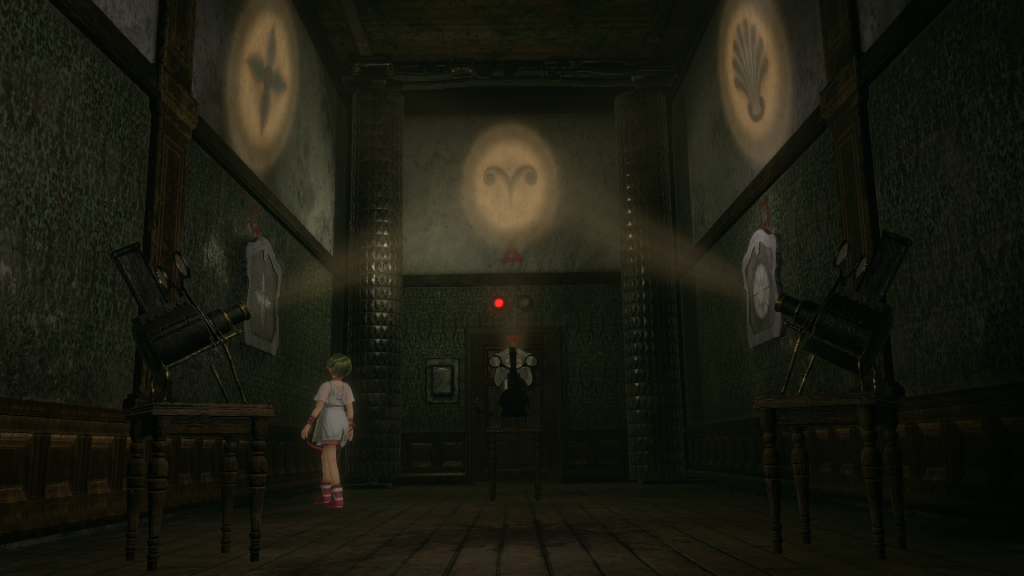
Takahashi: You and the other artists also did a good job in maintaining a sense of realism with all of the traps. Environmental assets for this title included traps that don’t exist, and the level designers can only give a general direction of what they are, so creating and implementing them while maintaining a sense of cohesion and realism was pretty tough, wasn’t it?
Kusaba: Well, there was some difficulty, but there was still a description to use as a base. The overall direction of Last Labyrinth’s environment art is to maintain some degree of realism, so the other artists and I look for things that exist in real-life. When we find something that can work with the description given by the level designers, we use that as a basis to create background assets. Though even when using existing objects as a basis, we still had to make iterations since Takahashi rejected a lot of the things we tried.
—–What were things that particularly gave you a lot of trouble during development?
Kusaba: The pipe organ, or at least that’s how the team commonly referred to it. When we first received the mock from the level designers, it was just a mish-mash of boxes. After test playing with everyone, including the artists, and deciding on a general direction, the artists had to make that idea a concrete design and model it. But, again, it’s not something that exists in real life…
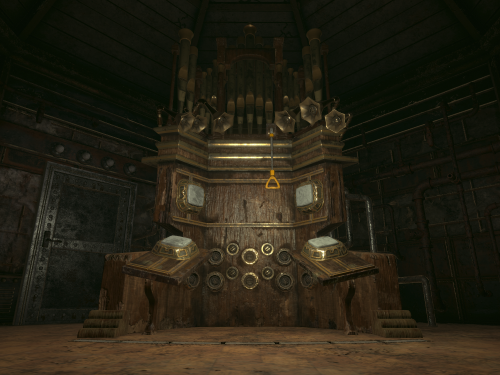
Takahashi: It can be hard to pin down the right design for something non-existant.
Kusaba: From the start, I was given the direction to make it like a pipe organ, but real pipe organs don’t have buttons on them, so I had to figure out what exactly I was making. Originally, there was going to be a rhythmic aspect included in the puzzle, so the design I made was a bit different than what you see in the game, but then that aspect was thrown out. Eventually, the design settled into what you see in the game, but it was difficult to work on.
■Favorite Parts of Last Labyrinth
——This was also asked at the Last Labyrinth Fan Meeting, but out of the everything each of you worked on, what are some of your favorite parts or things you want players to notice?
Fukuyama: Hmm. I didn’t say this at the fan meeting since it would take too long to talk in detail about it, but my answer is “everything.” Everything I worked on was important in making the character appealing and alive. I don’t think anyone can convey an entire character with only one motion, and it’s the sum of all the motions together that gives each character a sense of personality. So I like and want everyone to look closely at everything about the characters and their movements, including the AI work coded in by the programmers.
Kusaba: At the fan meeting, I mentioned floor stains. This goes with what I talked about earlier, but details like floor stains are things that don’t stand out as much compared to other aspects of the game. It’s not something that people would usually take note of.
But I tried to use details like the floor stains to create a somewhat creepy atmosphere in the mansion and make people wonder what kind of place this is.
Of course, as a whole, I aimed to make the setting feel natural, so the details that I did add tended to be subtle. For example, there is a room with a large stain. What this stain is is hard to see, so it’s ambiguous in that sense, but if the player looks closely, they would find that it looks kind of like a blood stain due to the lighting.
I liked adding little things hidden in the rooms, and it’s fun to watch people notice them. Well, I’m also grinning when people don’t notice them, too.
The reason I was particular about how the floor looks is because the player is likely to look very closely at each room, and since the player is bound to a wheelchair, the player is always positioned close to the floor. So I tried to convey a mysterious and creepy tone, and hint at what this place is through details in the surroundings like with the floor stains.
Fukuyama: I really like the floors, too. They give the rooms a sense of presence and make the game as a whole feel more real.
Watanabe: I think the attention that went into details like that helped ground the more unrealistic elements.
Takahashi: Each room’s background art is pretty different from one another with different variations like having the floor paint peeling off and such.
Kusaba: Yes! I put details like that in even though I knew people are not likely to notice them all. Besides the floor, I also put in things like built-up dust and other little things like that here and there. It was fun in its own way when I was working on it (laughs). Sometimes I left some of the parts that stand out more to the other artists, and focused more on the subtler details.
Hanaoka: The floor was also something I had to pay attention to when creating sounds for the game. Footsteps sound different depending on the material that is stepped on, and if you reuse the same set of footstep sounds too many times, players would notice it and it starts to sound artificial. To make sure the footsteps always sound natural, I made about 10 patterns for each type of material, and these sounds were then used randomly each time. We felt that this was necessary to maintain a sense of realism within VR.
Out of what I worked on, the Room of the Hermit in particular required a lot of sound work due to the number of mechanisms in the room. I also want players to listen to the sounds in the Room of Justice and the Room of the Pope. Those two rooms are not composed of as many sounds, but I feel that those rooms are the best in making the player feel uncomfortable through sound. If you haven’t died in those rooms, I recommend dying in those rooms once and listening to the sounds. I’m pretty proud of how creepy and unpleasant the sounds turned out.
Watanabe: My favorite part is probably the scene where Phantom appears for the first time. You turn on the light like always, then, whoa! Someone there! It really catches you off guard. Sometimes it can be tricky to purposely scare the player, but in this case, a simple jumpscare proved to be effective. It was simple, but it turned out better than I expected, so I really like that scene.
Takahashi: Hmm, for me I think my favorite part is the cliff that you see in some of the endings. Some players commented that it reminds them of the TV drama series “Tuesday Suspense Theatre” (火曜サスペンス劇場), but that’s probably because that is the exact image I had. (laugh)
By using a cliff for these scenes, there is a sense of freedom, but at the same time, it’s not a freedom that’s completely relieving.
Of course, I did also expect for people to make the comparison and comment “It’s Tuesday Suspense!” (laughs)
After being inside a dark mansion for a long time, it feels liberating to finally be outside in an open space. Yet, at the same time, the wind is blowing and you’re standing at a cliff with nowhere to go. There’s something discomforting about that.
I feel that we created that sort of free yet disquieting feeling with all of the cliff scenes.
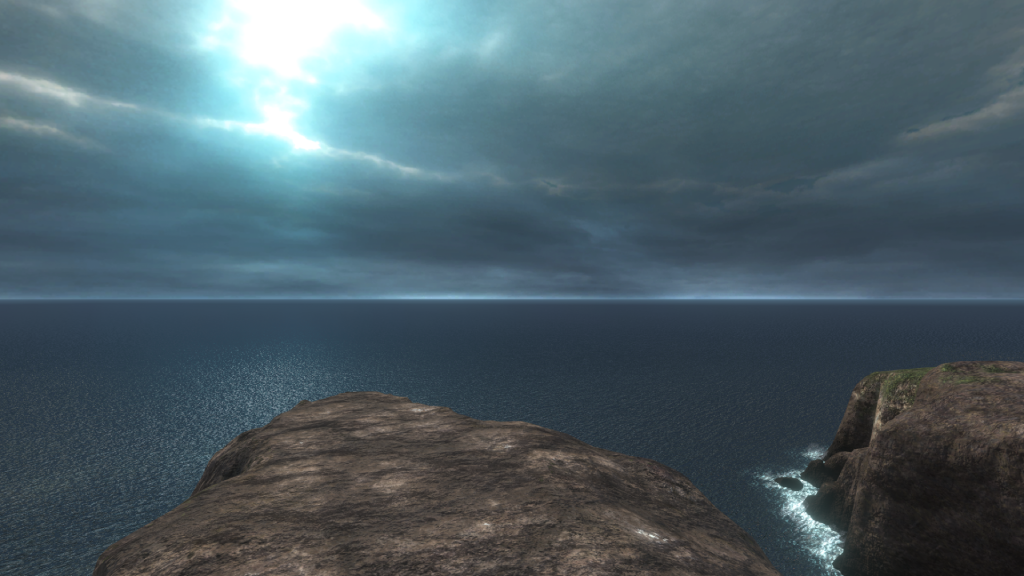
■Closing Remarks
Takahashi: This was the first time we utilized Kickstarter, so it was a new experience for us. However, we were thankfully able to gain many supporters and successfully develop the project into a game played by several users.
We will continue challenging ourselves to new things in the future, but I hope we can continue to have your support for Last Labyrinth as well as Amata’s future endeavors. Thank you for backing and supporting Last Labyrinth.
The livestream was fairly casual, but I hope everyone enjoyed it.
—–I’m sorry that this livestream was so disorganized!
Takahashi: No, it’s fine. It was the first time we did this sort of Q&A livestream, and initially we were going to gather together to do it, but with the current situation, we had to switch to everyone doing it from their own homes. On a positive note, everyone’s names are always displayed so it’s easy to tell who is who.
Fukuyama: We got to show our homes too.
Watanabe: Not that anyone asked to see them. (laughs)



